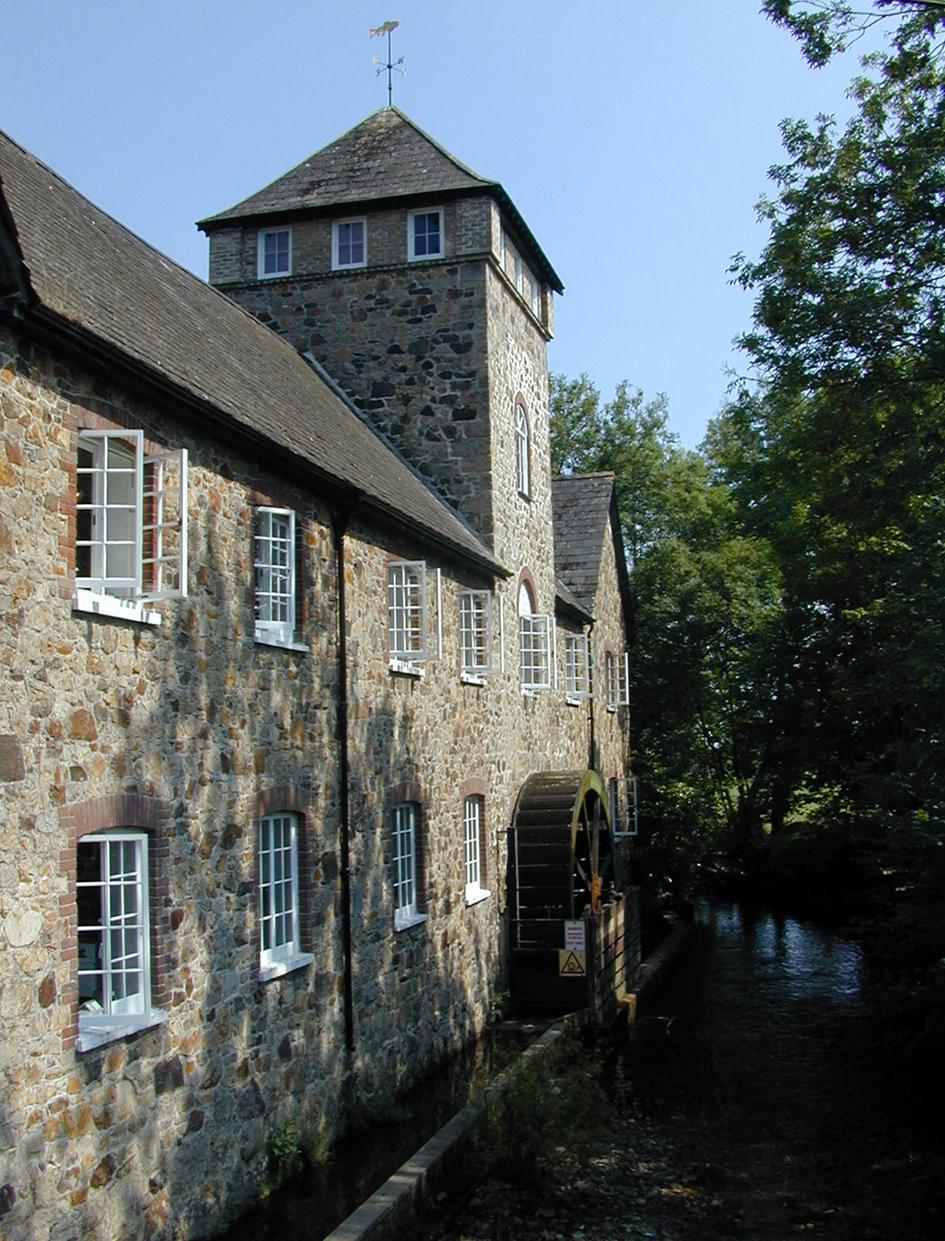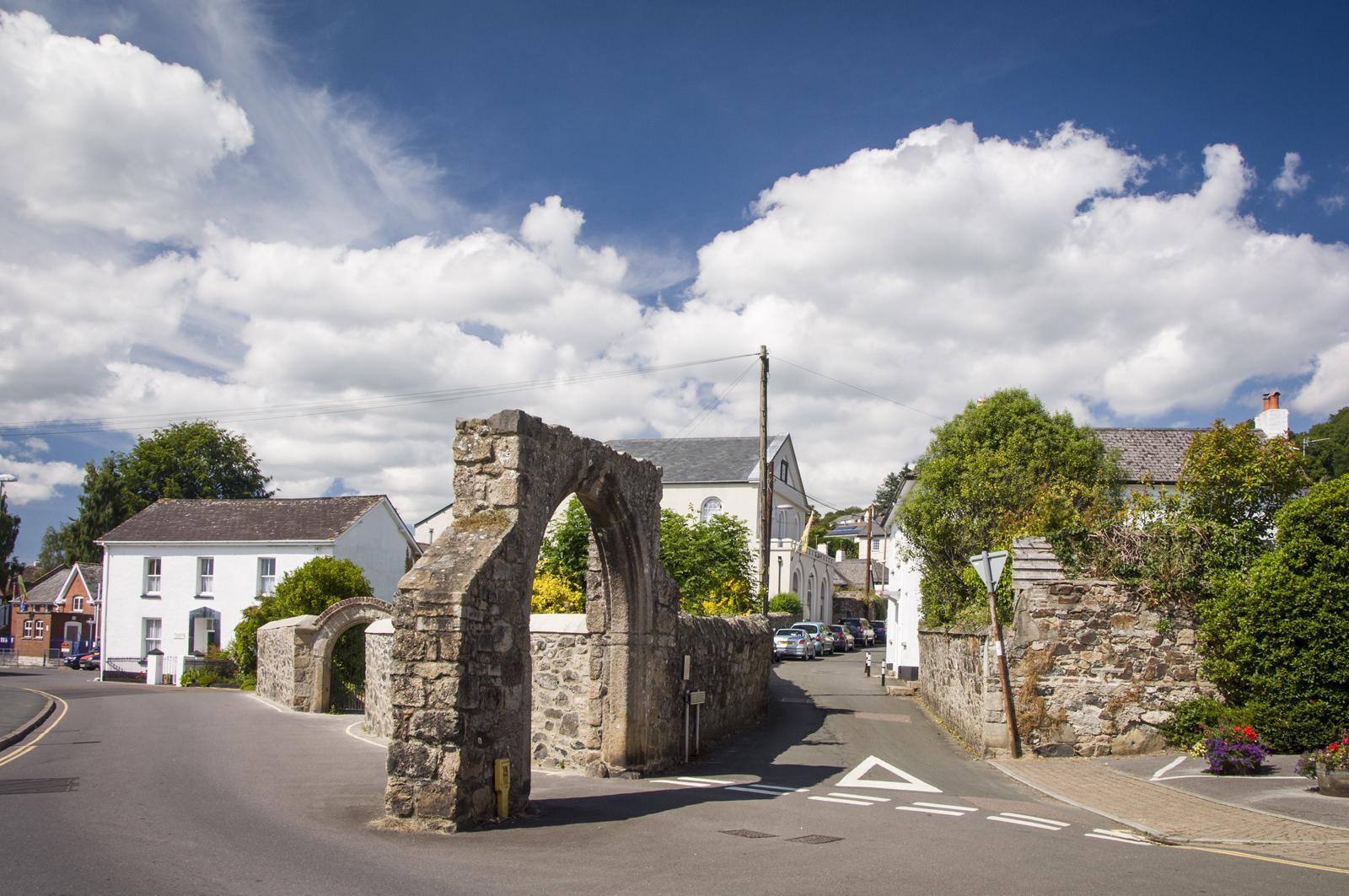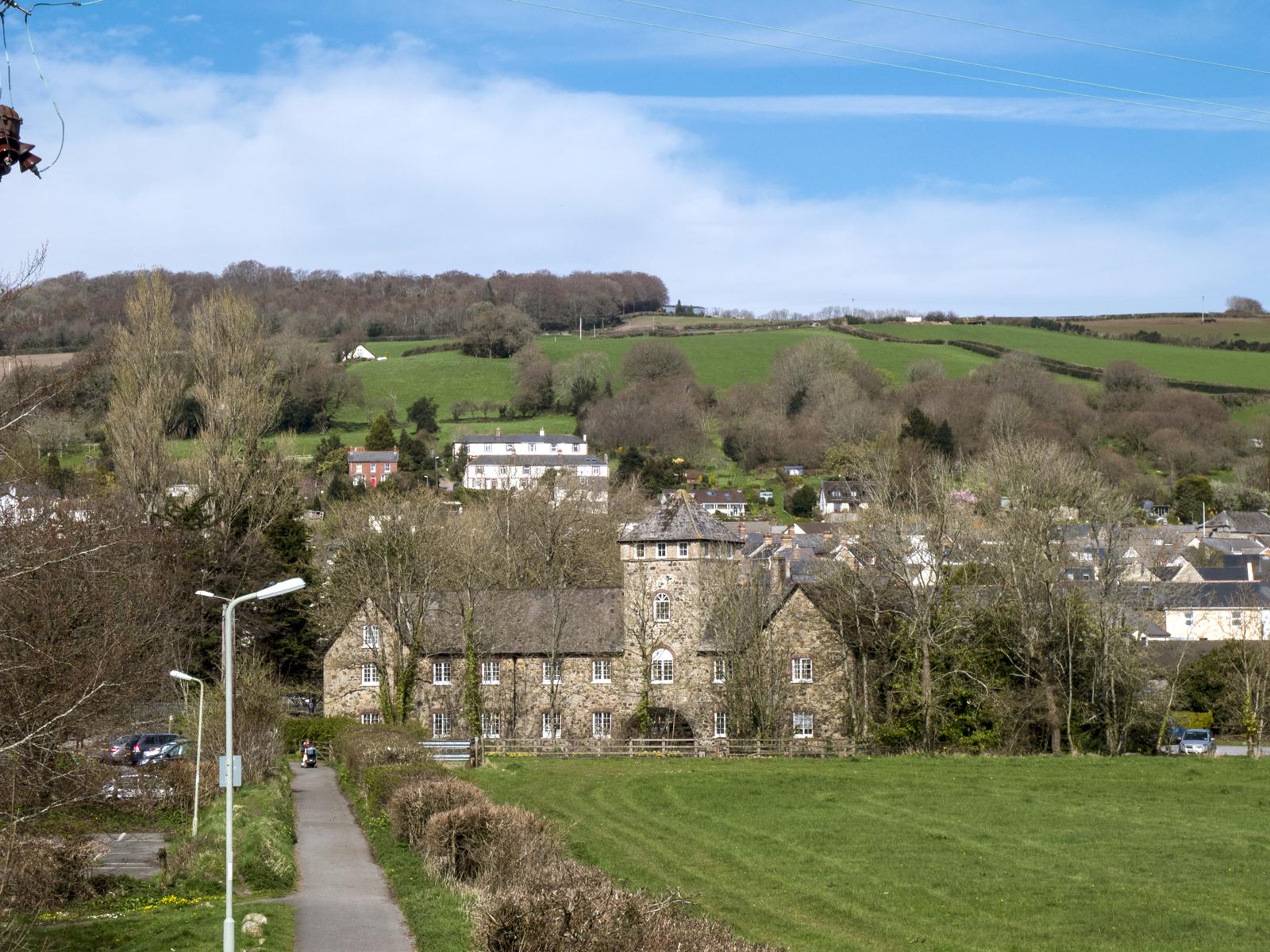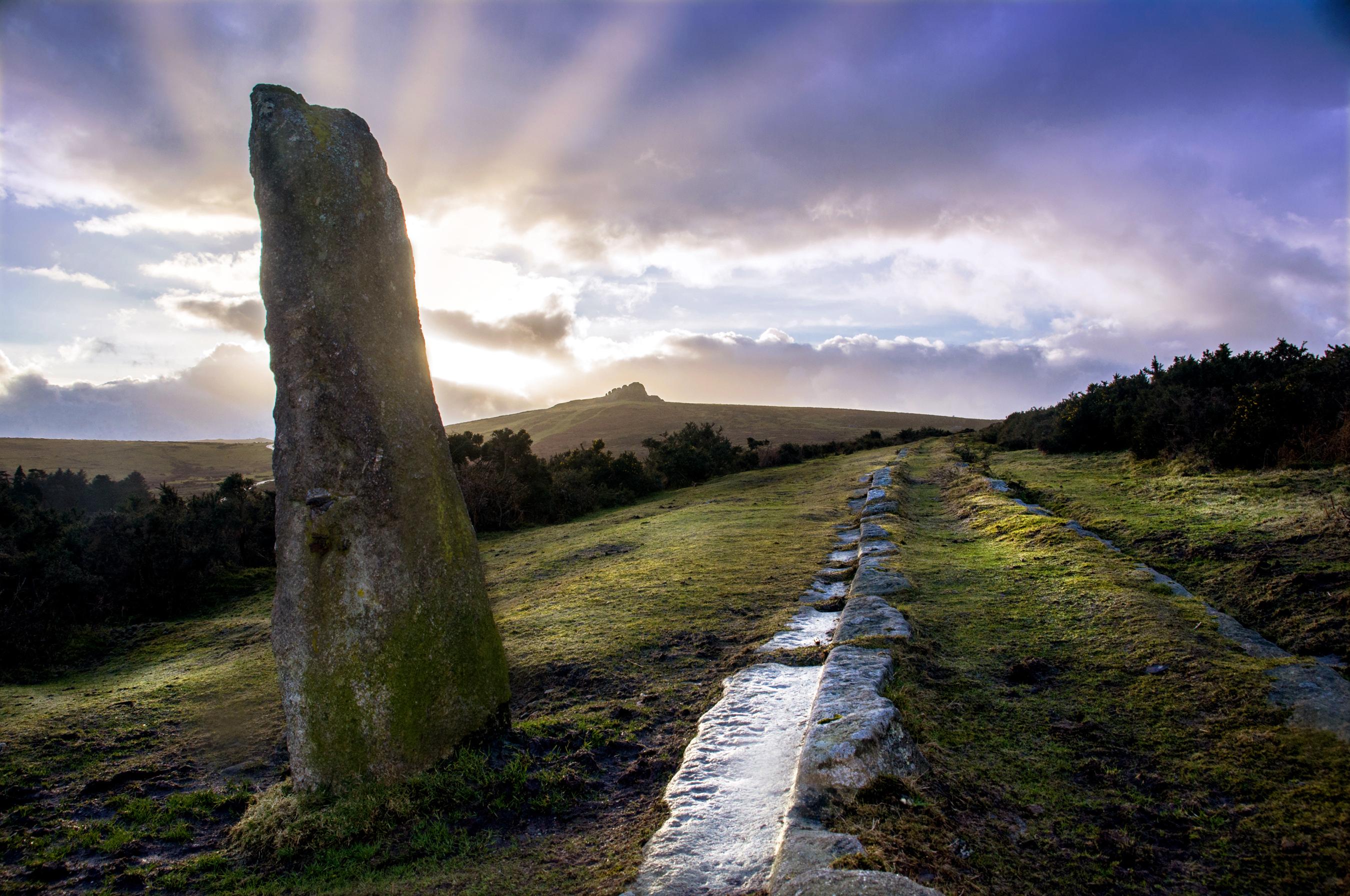
Bovey Tracey takes its name from the river, named by the Saxons as Bofa or Boui, which passes through the town and later known as the River Bovey. The town was known as South Bovey. After the Battle of Hastings in 1066, the Manor of Bovey was gifted to the barony of Geoffrye de Moubray and later passed to Judhael of Totnes. His daughter married Henry de Tracey and the Manor was held by the de Traceys, adding their name to the river name. In 1260, during the reign of Henry III, another Henry de Tracey obtained a charter, allowing a weekly market and an annual fair. Fairs and markets have been held in the town for many centuries and there have been celebrations on the 700th and 750th anniversaries of the award of the charter.
The Parish Church of St Peter, St Paul and St Thomas of Canterbury at the top of East Street was probably built on the site of a Saxon Church, dedicated to saints Peter and Paul. Building work was carried out during the 13th and 14th centuries, and the name of Saint Thomas of Canterbury was added. The Norman building was largely destroyed by fire and most of the existing building dates from the 15th century. Canon Courtenay was appointed vicar of Bovey Tracey in 1849. At his instigation, a second Parish Church, the Church of St John the Evangelist was built in the 1850s, originally as a Chapel of Ease for a growing population. Canon Courtenay was also responsible for inviting the Clewer Sisters to work in Bovey. The Sisters opened a Mission House in Fore Street in 1879, offering religious instruction as well as help for the sick and needy. A refuge for inner city women at risk of prostitution was established at Chapple Farm in 1863. Building work to establish the much larger Devon House of Mercy, a short distance from the Parish Church in east Street, began in 1865 and contained accommodation for 72 women. The Clewer Sisters managed the care and religious education of these vulnerable women, providing training in laundry, kitchen work or embroidery, skills required for domestic Service. Following the Second World War, Devon House was converted into residential accommodation.
The restored Riverside Mill building in the centre of Bovey Tracey is home to MAKE Southwest. The building was never used as a mill but was built in 1850 as a stable, when the building was owned by John Divett, owner of Bovey Pottery. The waterwheel collected water from the river for use in the stables and Bridge House, which is now residential flats and the Co-operative Convenience store.
The old Market Cross, close to the Town Hall, was converted to the main town War Memorial in 1921. This was the original site of the village green and the Town Hall was opened here in 1866.
More information about the names on the war memorial can be found here:
The nearby Parke Estate was gifted to the National Trust by Major Hole in 1974. The house was renovated and became the headquarters of Dartmoor National Park in 1979. Although mentioned in the 11th century the present building dates from 1826, when William Hole demolished the old building. The estate remained in the hands of the Hole family and operated as a hotel in the 1920s. It was a convalescent home during the Second World War but when the family returned in the 1950s there were regular pheasant and duck shoots and point to point races. The Estate is now a popular place for riverside and woodland walks and is home to a Community Garden.
The railway line that passed through Bovey Tracey was a branch line that ran between Newton Abbot and Moretonhampstead. It was opened to passengers on 4th July 1866 by the Moretonhampstead and South Devon Railway Company, whose directors all had local connections and included the Earl of Devon, Thomas Wills, William Hole and John Divett, the owner of Bovey Pottery. The line was closed to passengers in 1959 and remained as goods line until 1970, when the station was closed. The line was taken up to enable the construction of the bypass (A382), opened in 1987. The Victorian, granite-built railway station remained empty and derelict. Thanks to the support of the Town Council, this Grade II listed building was preserved and renovated with a grant from the Heritage Lottery Fund and it now houses the Bovey Tracey Heritage Centre. The Centre is maintained by Bovey Tracey Heritage Trust, a registered charity. Volunteers ensure that the Centre is open to the public during the summer and maintains an archive of documents and photographs as well as artefacts relating to the history of our town.
Visitor information can be found here.
Cromwell's Arch

An archway, known locally as Cromwell's Arch, lies a little off the main street. This is all that remains of a monastery which once stood on the site until it was demolished in 1822. It now serves as a reminder of Bovey Traceys connection with the Civil War. In January 1646, the Town was the headquarters of Lord Wentworth. Cromwell's troops are said to have surprised Royalist officers who were playing cards in Fronthouse Lodge in East Street.
The Royalists threw coins out of the windows, leaving the poorly paid Roundheads to fight over the money while they escaped by the back door. The Battle of Bovey Heath was fought the following day with Cromwells army winning 400 horses and capturing seven regimental colours. A section of Bovey Heath is a Scheduled Ancient Monument Site and important artifacts from the battle have been found there over the years. Bovey Heathfield is now a haven for rare plants and wildlife, owned and managed by Devon Wildlife Trust.
Pottery

As the area is at the edge of the Bovey Basin, famous for its production of valuable clays, the towns pottery industry was established in the 1750s. Josiah Wedgwood visited the Indio Pottery on 31st May 1775 to see the competition for himself and noted:
I went to Bovey Tracey to see a potwork It is a poor trifling concern, and conducted in a wretched slovenly manner We can carry their clay and flints from Devonshire to Staffordshire, there manufacture them into ware, and send it back to their own doors better and cheaper than they can make it!
Nonetheless, research by Adams & Thomas in their book A Potwork in Devonshire, published in 1996 by Sayce Publishing, suggests that far from being a poor trifling concern, these potteries played a significant role in the foundation and development of English industrial pottery.
Yet as ball clay and lignite, a sort of coal, were readily available close to the Town so the industry expanded swiftly. At the height of their success, Bovey Tracey Potteries provided jobs for about 250 people. By the middle of the 20th century, the industry was in decline and closed in the 1950s. Today the bottle kilns and examples of local pottery can be seen at the museum located at the House of Marbles, to the south of the town, where there is also a glass blowing centre and the largest collection of marbles in the world. Other potteries produced different types of products within the area. These included the Candy Art Pottery, Wemyss Ware and Plichta. Wemyss Ware is still manufactured locally. Fuller information on these potteries can be found in Ian Turners publication 'Candy Art Pottery' published by Hillian Press and Brian Adams's book 'Bovey Tracey Potteries - Guide and Marks' published by the House of Marbles.
The Templer Way

In 1820 George Templer built an eight mile tramway to connect the granite quarries at Haytor and the Stover Canal at Teigngrace to transport granite down to the River Teign and the coast. The Templer Way Trail follows much of the original route of the tramway from the moor to the sea. A leaflet giving full information on the Templer Way is available free from the Bovey Tracey Information Centre.
The railway linking Newton Abbot to Bovey Tracey and on to Moretonhampstead was built in 1866 and closed in 1959, when the last scheduled passenger train ran through the station on 2nd March 1959. The Grade II listed Railway Station building, in St Johns Lane, is now home to the Bovey Tracey Heritage Trust.